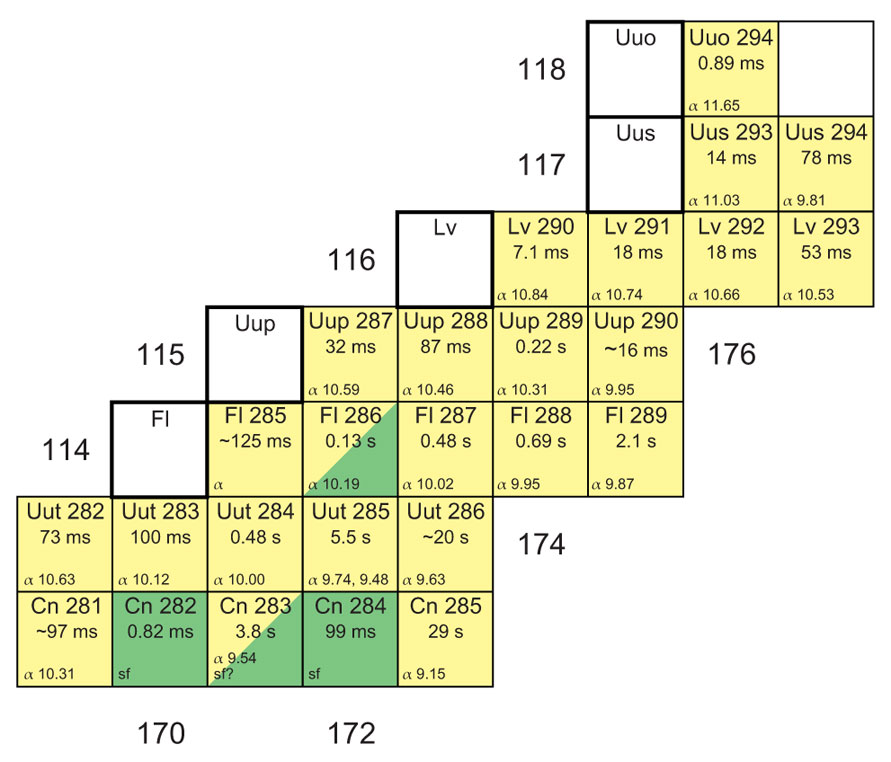Nuclear data
DOI: 10.1063/PT.3.1714
Nuclear data. The half-lives, decay modes, and emission energies of some 3847 experimentally observed nuclide ground states and isomers are presented in the 8th edition of the Karlsruhe Nuclide Chart, published in July by Nucleonica, an online nuclear-science portal company. The chart is a reference and teaching tool for fields such as health physics, radiation physics, nuclear and radio chemistry, astrophysics, Earth sciences, and agriculture.
The chart first came out in 1958, with revisions published every seven years on average. Publication of the latest version was held off to include the two most recently named elements, flerovium (atomic number 114) and livermorium (116). The chart includes details about 193 new nuclides and updates on 544 others.

The latest version of the Karlsruhe Nuclide Chart includes rows for newly named elements flerovium and livermorium. Each square gives nuclide mass number, half-life, and mode and energy of decay. The mass number is the sum of protons (numbers at left of rows) and neutrons (below columns).
NUCLEONICA GMBH, 2012

“We gather research results from all over and put them together,” says Joseph Magill, Nucleonica’s managing director. Nuclear scientists aim “not just to classify nuclides, but to try to produce superheavy elements,” he says. “If you can get beyond element 120, the theory predicts that everything becomes stable again.” Nucleonica develops the chart together with the European Commission’s Institute for Transuranium Elements in Karlsruhe, Germany.
The chart is available in various hard-copy formats starting at €28 ($34). The company plans to unveil an online version soon. More information about the chart is available at http://www.nucleonica.com.
More about the Authors
Toni Feder. tfeder@aip.org
